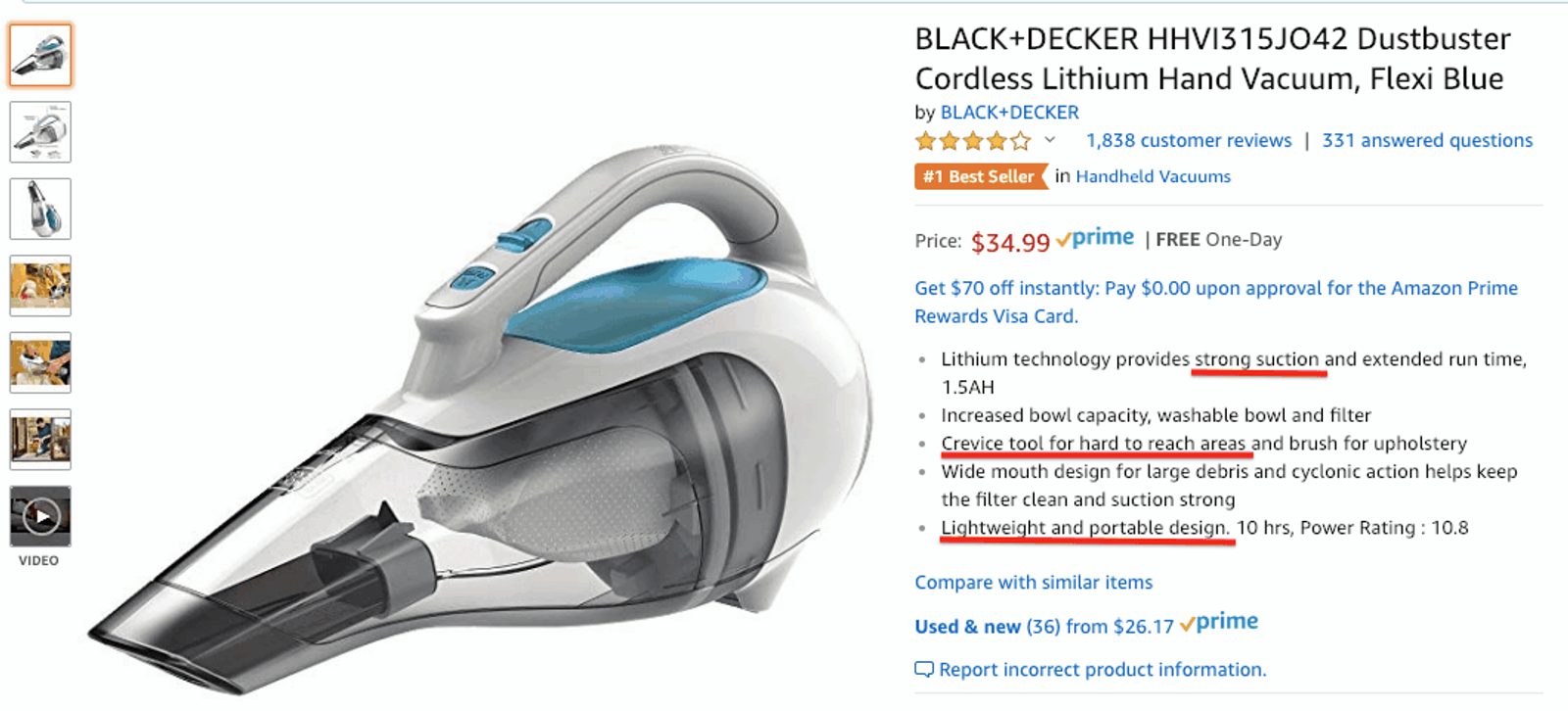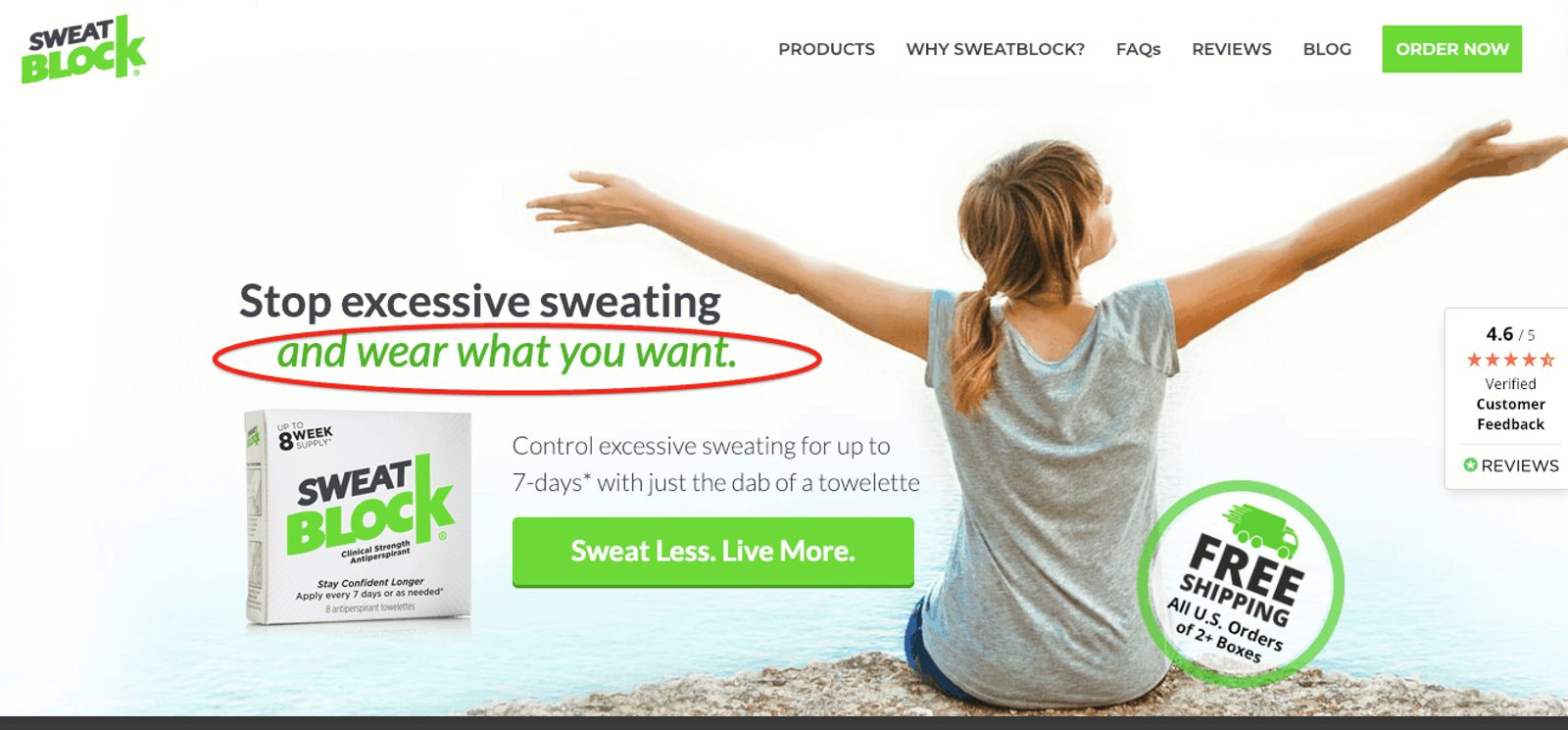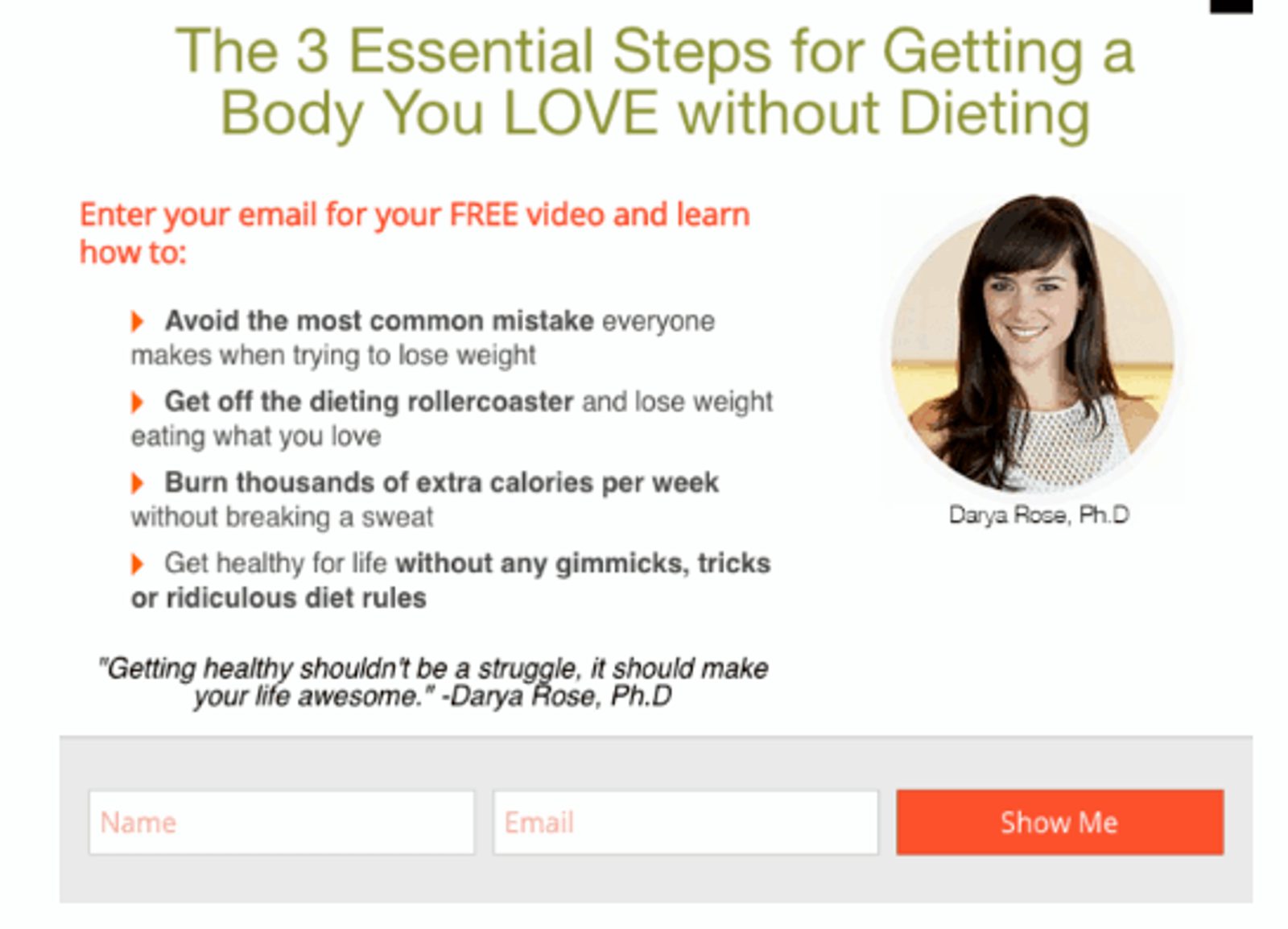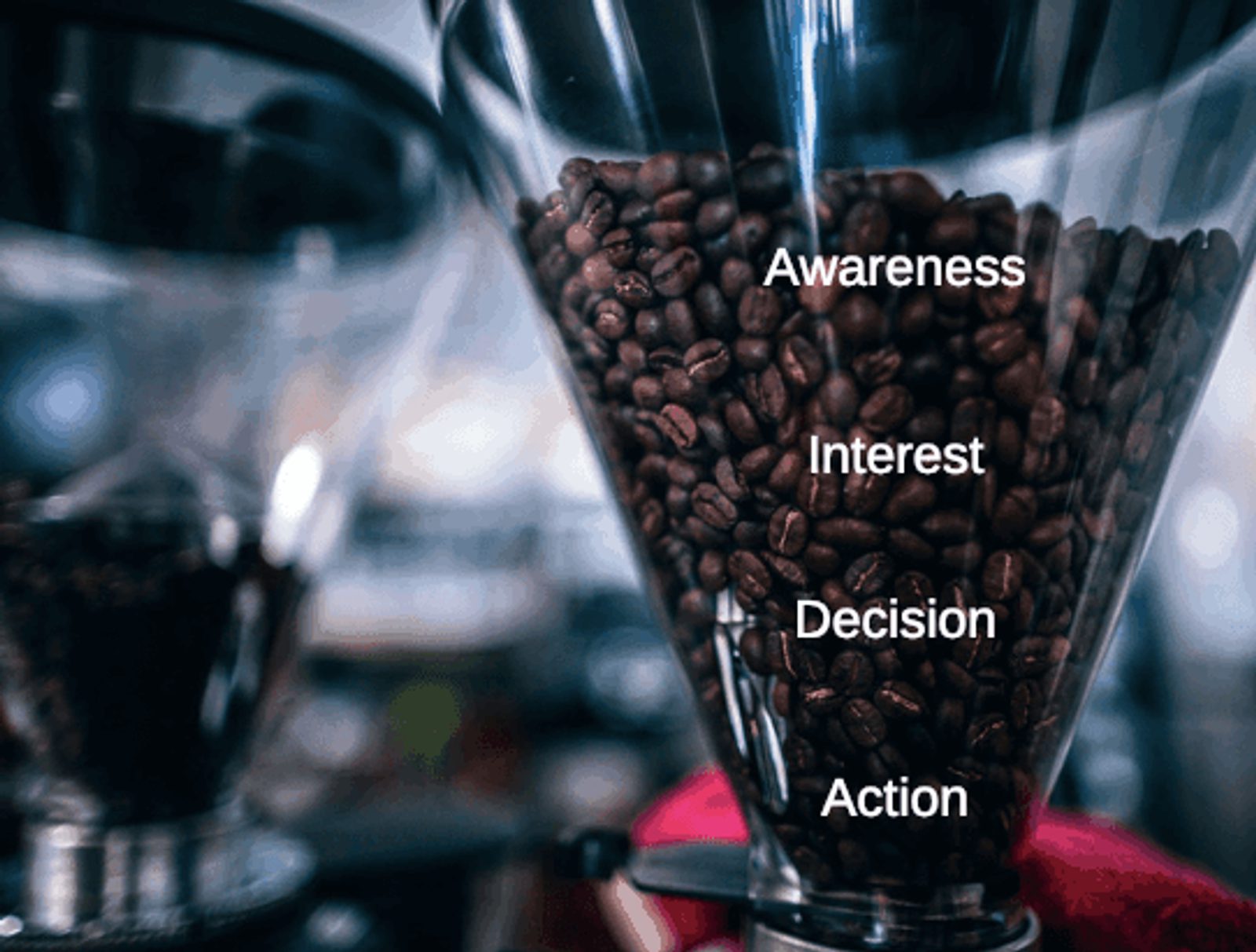Screen Recording 2019-01-21 at 08.25 AM.movThese results hit the bullseye.
There are no extra results or ads touting diets and weight loss from websites who care more about ranking on keywords than providing valuable content. Hallelujah.You click on the Livestrong result that matches your exact search. You like what you read, you think, “this has great info, I should get more of this content on a regular basis.” A subscribe click later, and Livestrong has successfully converted you.That’s successful targeted content.Livestrong not only created targeted content that was relevant to your needs, but optimized it so that it would appear with your exact search.Ultimately, they got you to click, read, and subscribe. A simple piece of targeted content won them a conversion.If you want the same successful conversions for your business, you need targeted content.Targeted content means more customer acquisition and retention.Great content that's properly targeted at a specific audience helps them get to know you, and they feel like you know them. After that, acquisition is as easy as pie.In this post you’ll learn:- What targeted content is, and why you should care about it (And do it. Starting yesterday.)
- How to create a targeted content strategy with 2 key stepsWhat to do afterward: measuring your success with analytics
Do you want content targeted to YOU?
What is targeted content?

Gotta outswim all those other content marketers.
How many people don’t start their mornings by checking social media, scrolling BuzzFeed or Reddit, watching a morning show, or reading a newspaper?Well...- In the first 60 seconds of your day, Facebook gets over 4 million likes. Over 2 million Instagram posts get a red heart.
- Every time you like a Facebook post, 4,166,666 other people are doing the same thing in that same minute.
How to create a targeted content strategy that hits the bullseye

What are y’all doing over there...
This is important, but it comes later.You actually need to start with these 2 important steps:- Get to know your audience
- Recognize your own growth constraints as a marketer
Know your audience
This somewhat overused marketing phrase reminds me of a line in a movie I watched a million times growing up.Bear with me, it’s from The Princess Diaries 2.“How can one rule the people, if they don’t know the people?”
Granted, this was about a fictional princess ruling a fictional country, but it applies.Many brands think they know who their audience is. But often they get stuck thinking of who they want their audience to be. It’s ok, we all do it from time to time. But, a good content strategy will cater to the audience, not to you.You need to know your audience.
That’s right. Get to know each and every one of them.
Here’s the thing about knowing your audience, though – it’s sort of crap. But not completely.Don’t get me wrong, targeting demographics and tracking customer data isn’t useless, but it isn’t really knowing your audience the way you need to.Instead of targeting their demographic info, try review mining. Target what they are actually saying they need.9 times out of 10, customers aren’t just searching for a definition of something. They are looking for a thorough understanding of a subject or a solution to a problem. Your content needs to target not only the specific audience, but a specific problem that they need solved.So, how do you get to know your audience? Put yourself in their shoes and ask yourself the questions they are asking in their language.You might be thinking, “well what ARE those questions?”Relax. You know them already. Or at the very least you can easily find them.You might be the marketer and not the customer in this case, but you have been a customer. You have the same pains and thoughts as any customer.- What are the tasks your customers struggle with each day?
- What do they love?
- What do they hate?
- What questions are they likely to ask about this subject?
“You shouldn’t look inside your head for the messages that will convince your prospects.You’re not your prospect. So how the hell could you know what they need to hear? It’s vanity to think you could. Instead of writing your message, steal it. Steal it directly from your prospects.”
Look to your prospects. Mine those reviews. Your content marketing audience will understand content that doesn’t sound like it was sourced from an encyclopedia or a dictionary.I recently bought a small handheld Black and Decker vacuum cleaner from Amazon, because I learned quickly that trying to navigate my small bedroom with hard-to-reach corners using a regular size vacuum was a fool's errand.But let’s travel back in time to before I actually made the purchase, when I was still researching the best options.I was looking for a vacuum with the following criteria:- Ability to get into small spaces
- Cordless
- Powerful against a tough carpet
- Light and easy to handle

I’ve seen some of those words before...
“I’ve struggled with heavy vacuums...perfect for getting into hard-to-reach places…”I didn’t say these words in a review myself, I haven’t actually left a review for this product yet. But I’m not the only prospective or current customer to have these pain points.The Amazon description for this product actually shows some of the language that this particular customer used in her review. A+ review mining, Black and Decker.
Bam.
Good targeted content means knowing your audience, which means knowing their pain.The typical way to create a content strategy is on the left. The better way to create a content strategy is on the right.
Don’t pick the typical way, pick the way that works.
Keywords are an important part of your content’s SEO, but they are not the key player in content that will resonate with your customers. Content that addresses their pain points is what will resonate, which means the typical strategy doesn’t typically work as well.Sweatblock does a great job of targeting pain points with the copy on their homepage.
“Wear what you want.” That sounds like the thing someone would actually say, right??
Sweatblock addresses this pain point and makes people feel understood—by using the exact words they use to describe their problem. It’s also something that this article does.
Hmm...what would a customer looking for reasons that they sweat so much search for? Probably, “Why do I sweat so much?”
The title is literally a customer problem that Sweatblock solves. Hello, new customersDarya Rose is also great at using both the voice of her customers and their pain points to make great content:
The pain point? Getting a body you love. The solution? NOT dieting (hallelujah).
You can learn about customer pain points in two easy ways:- Literally talking to them (they won’t bite)
- Reading their online reviews (like with that vacuum) – you have their actual language available to you on paper, in black and white. Use it.
It’s not all about the customer: identify your marketing growth constraints
Forget about the customer for a minute. What about you?Customers have pain points, but so do businesses. These pain points are the growth constraints for marketers, and content marketing without identifying what they are will make your efforts less effective.You will be able to plan content for different stages of the product funnel, but before you can do that you have to consider what growth constraints you have, and where in the funnel they fall.For a quick visual refresher, here’s the funnel.
Wake up and smell the content.
Now it’s typical to focus on creating content for that top-of-funnel awareness stage because creating awareness is a very common growth constraint for businesses.But it’s not the only one.What if your awareness is great, but your conversions at a later funnel stage are not as stellar as you’d like?Jimmy Daly of Animalz uses a great example that hit home with me personally as a writer.Ever heard of Grammarly?It’s like having a second set of on-call editing eyes on your work at all times. I love it. It catches my little mistakes right when they happen (and it has also taught me that fast typing is not always a plus).I’ve used their free version for a while, but when I first got it, they did not have a Google Chrome extension. Given that I work exclusively in Google docs, this was kind of a bummer.
Why.
But then, the extension arrived. I have it now, and it’s awesome. 10 million other people who downloaded it also think so.But here’s the problem for Grammarly. This extension was free to download on top of their existing freemium platform. And since 10 million people already know about it, driving awareness really isn’t their problem.Grammarly runs on a freemium model, which means…- There are a lot of free users who don’t become paying members
- The company has to spend money serving users who don’t generate revenue
- Growth constraints aren’t at the top of the funnel (more total users)—they’re further down, in converting people to paying customers

The tactical and strategic spectrum.
Although there are plenty of gray areas along the spectrum, most people can be labeled as one or the other for your purposes.Jimmy Daly explains this well.“Tactical readers—the implementers who need instructions on writing email subject lines or growing a Twitter following—benefit from tactical content. The more actionable, the better.
Strategic thinkers—managers and executives running teams and controlling budgets—don’t need step-by-step directions to do their jobs. They need models, frameworks and principles to guide their thinking.
As you build and refine your content strategy, think of your readers on a spectrum from tactical to strategic. You’ll want to address both ends and everything in the middle.”
Tactical readers will be those top-of-funnel awareness content consumers.Strategic readers will be further down the funnel needing less fundamental instruction and more growth inspiration.Growth constraints will be different for every marketer. Where are you having trouble growing? Find the source of the constraint and target content there.Do you know what else happens when you look at pain points exist between your customers and your business? You also learn what’s not thereIdentifying customer pain points and your own growth constraints will help you find content gaps that you can target and fill. This completes your content strategy (aside from actually creating the content for it).
Look for that gap.
Content gaps are words that you are ranking for beyond page 3. Programs like SEMrush have content analysis tools to help you see what words you could rank better on. It can help you provide content for questions or topics that people haven’t thought to look for yet.You can either search them manually (yawn) or use a content gap finder like this one here.Have you ever done keyword research or looked through search results and noticed that all the results seem to be on the same theme? And are all mostly saying the same thing?This is your chance to plan for content that does two things: keeps the searcher intent in mind but also providing insight on the unanswered topics and questions.This will give your content marketing an edge. You don’t just know everything your competitors know, you know things they don’t know.“Our job is not to create content. Our job is to change the world of the people who consume it.” – Andrea Fryrear, President at AgileSherpas
Ok, so our job is still to create content technically, but Andrea Fryrear isn’t wrong. We don’t create content just to create it and watch metrics like it’s binge-worthy TV. We create content to change the lives of our customers.Now, go create some ultra-targeted content.Have you hit the target? Only one way to find out
- Search rankings
- Click-through rate
- Website traffic
- Domain authority
- Links
- Subscriber growth









